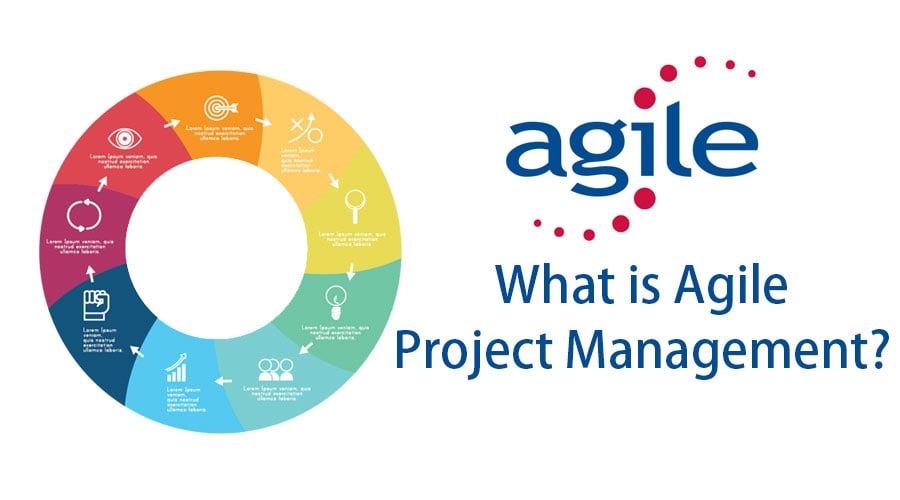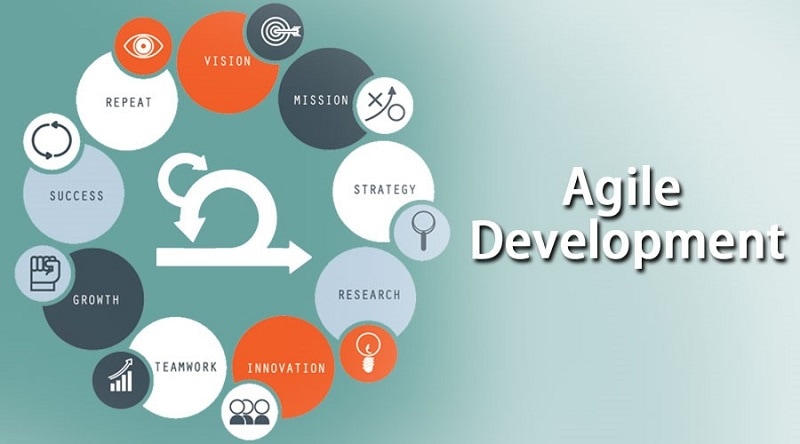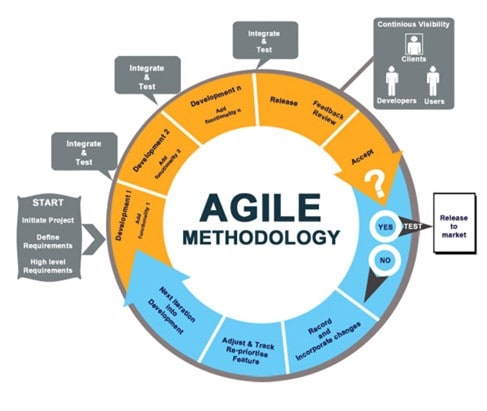Agile Project Management – Guide for Product Managers
The Agile approach to project management has been helping a lot of businesses to improve the quality of the completed projects significantly. Nevertheless, it is very important that before you think about investing in Agile project management, you recognize and understand what Agile project management actually is, how it is defined, what is the methodology used, what are its main features and what it means for project development.

To keep it very simple, Agile management usually includes using short development cycles, several iterations and constant development with the flexibility to make amendments as the project progresses. These amendments are made based on the product testing and feedback of the end user.
- Part 1: What is agile project management
- Part 2: What's the main features of agile project management
- Part 3: Agile project management methodology
- Part 4: Product prototype tool you may need
What is Agile PM - Project Management?
The decision of an organization to become agile brings about some changes. It directly affects the traditional culture and enables the organization to introduce innovative methods to work on various projects, however not everyone is expected to be convinced. Agile project management is an iterative method of completing a venture or a project throughout its life cycle. There are a number of iterations or incremental steps in the agile life cycle while we move towards the conclusion of a project. Iterative methodologies are used very regularly in projects related to software development in order to encourage velocity and flexibility as it is very convenient to make changes as you move along rather than following a pre decided path. One of the major purpose of an agile approach is that you are able to benefit right through the process rather than only at the end of the process. Agile projects must be able to display central values and behaviors of trust, flexibility, empowerment and teamwork.

What are the main features of Agile project management?
There is perhaps an increasing inclination of corporate and team culture towards more agility in organizations. But what does this actually mean? What does it mean to work agile and why has this inclination towards agility become so popular? When we talk about flexible working the first thing that comes to our mind is having flexible working hours and flexible locations in mind such as options for home office. However, Agility is not just about simply time and place but something more than that.

The meaning of Agile is exactly the opposite of rigid and sluggish. The IT sector has been the original introducer of agile methodology where they have approaches like Scrum and Kanban, which are used frequently by product development teams. These approaches and methods are now being adapted by everyday office life and are significantly benefiting project teams in particular. The purpose is to adapt the flexible working procedures culture and get rid of rigid and decelerating corporate structures.
- Goal. Preceding approaches by corporate and teams focused on detailed planning in order to successfully complete the project. However, after spending a lot of working hours on planning and in the process of trying to execute the agile project plan it was realized that the plan had failed. And the next few hours are again consumed trying to correct the mistakes which are identified in the plan instead of concentrating on the actual objective. This is the main reason why agile approach depends on precise goals and procedures alone, so that it is easier to get familiarised with the changes and respond quicker to the unexpected.
- Time. Although there is flexibility and a lot of amendments in the plan can be made on the go, but still the team has to keep track of the time as they have to follow a determined timeframe and specific requirements of how the end result is supposed to look like. It is very important that all essential requirements along with the newly added features are taken into consideration before concluding the project as it can become extremely expensive to make any changes in the conditions of the end result after the deadline. The good thing about APM is that as the team is already expecting changes, it has no problem in adapting to the new tasks and requirements.
- Responsibility. Each and every individual in the team considers himself/herself responsible and devotes themselves to the ultimate objective of the project. They are empowered to make important decisions. They need to take care of the individual tasks and self-organize their duties and and are given the liberty to develop solutions on their own in order to achieve the goal.
- Cooperation and Transparency. In order to get the best out of each team member the responsibilities and procedures and kept crystal clear within the team. This way each member will get the opportunity to use their respective knowledge to the fullest and help in realizing the goal. At the same time, all the progress made by the team will be openly visible to all other stake holders.

Regrettably, most of the organizations overlook the fact that working faster or making lesser mistakes does not necessarily describe agility. This is the reason that such misconceptions are the source of having unrealistic and erroneous expectations towards agile approaches. Eventually, the concept behind agility is to lessen bureaucracy and detailed planning and to enhance teamwork and collaboration so that the targeted customer-oriented objectives are achieved. A quicker system can be a good side advantage but should not be expected.
Agile Project Management Methodology
Agile project management with scrum involves a process where a team is able to manage a project by dividing it into numerous stages, it involves continuous teamwork and collaboration with the all the stakeholders and constant improvement and iteration at each and every phase.

The Agile methodology basically starts with the client explaining that what problem the product would be solving and how it will be used to solve that problem. This is very helpful in clearly defining what the customer expects from the project team. Once the process starts, teams go through the all the stages starting from the process of planning, executing, and evaluating — which in most cases helps to improve the final deliverable to fit the customer's requirement better. They key is to be able to collaborate constantly, both amongst team members and with project stakeholders, to make fully-informed decisions.
Agile's four main values are expressed as:
- Individuals and interactions over processes and tools
- Working software over comprehensive documentation
- Customer collaboration over contract negotiation
- Responding to change over following a plan
Product Prototype tool you may need
One of the worst tasks that a product manager is faced with relates to presenting a product wireframe for showing to the designers. If you are a product manager, you would know the headache that comes along with presentation of your product wireframe to a potential client. How about we tell you all your problems are about to be solved?
Wondershare Mockitt is a fast and convenient software that you can create a complete prototype in only 10 minutes! Mockitt is a lightweight online tool with an intuitive interface. The simple drag and drop workflow makes the learning curve shallow. It's easy for anyone to get started! Even if you are a beginner product manager, you still can work like experts with the vast icon and component libraries, 20+ industry-specific templates, and easy drag-and-drop function to add, arrange, and connect components.

Another benefit of Wondershare Mockitt is Interactive teamwork,with the strong team work,you can save an average of 6-8 hours as well as $200 per project! Comment and share feedback with your colleagues in real-time. Mockitt is ideal if members of your team work remotely.
Agile project management was never a breeze before!

